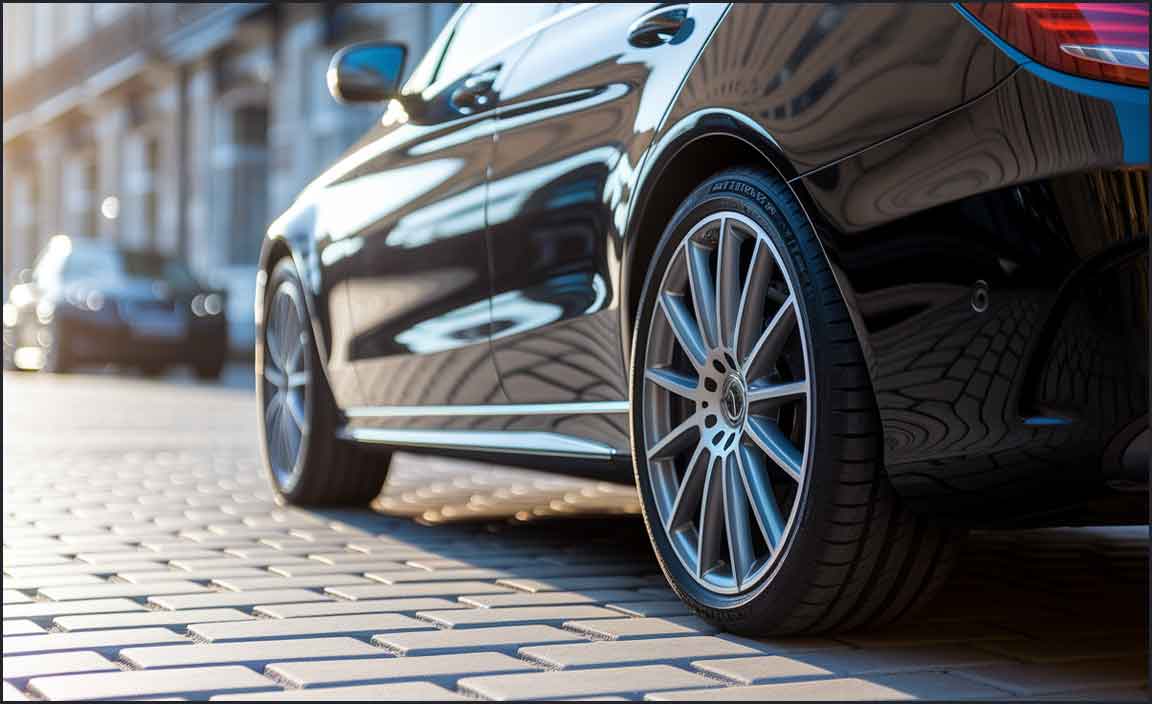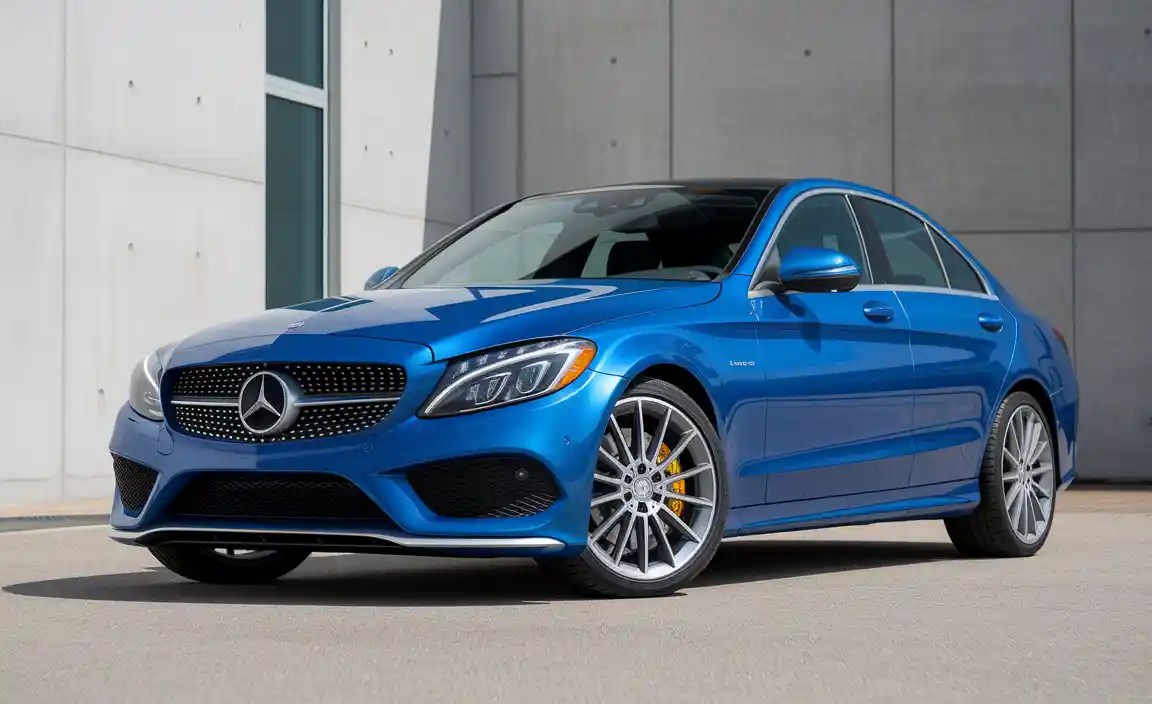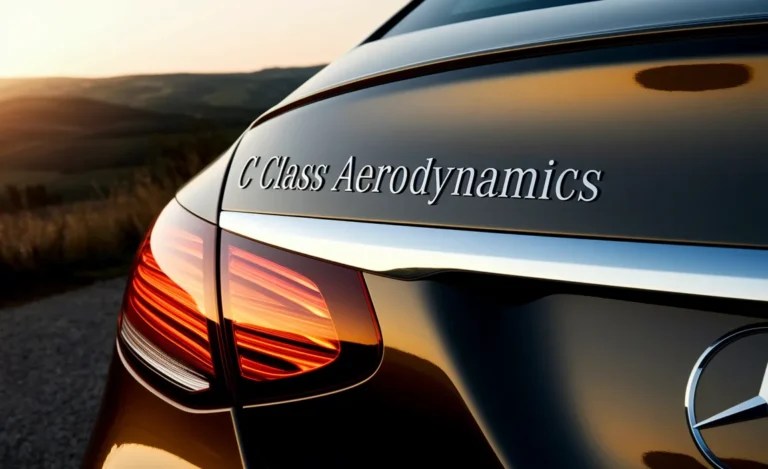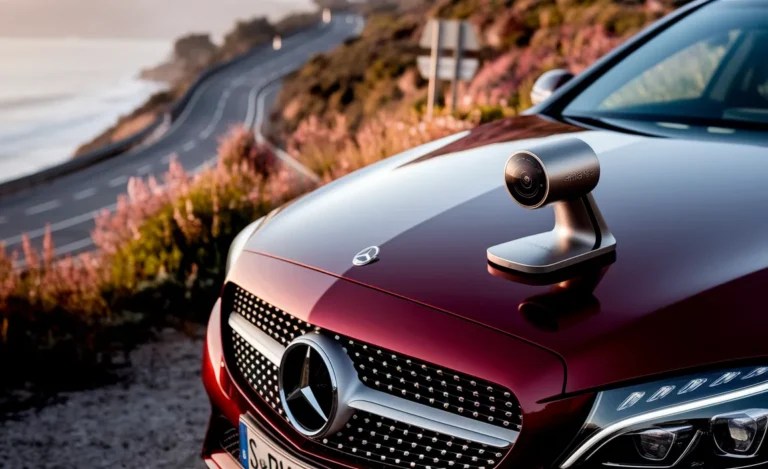Mercedes-Benz C Class Bushings Upgrade: Ultimate Performance Perfected
Upgrade your Mercedes C Class bushings for noticeably improved handling, sharper steering response, and a more connected driving feel. This guide simplifies the process, helping you achieve perfected performance for your luxury sedan.
When you drive a Mercedes-Benz C Class, you expect a certain level of refinement and performance. However, over time, the rubber bushings that connect various suspension and steering components can wear out. This wear can lead to a soft, disconnected feeling when driving, impacting steering precision and overall handling. Fortunately, upgrading these bushings is a smart way to restore and even enhance your C Class’s original driving dynamics.
This guide will walk you through everything you need to know about C Class bushings upgrades, making it accessible for every owner. We’ll cover what bushings are, why they matter, the benefits of an upgrade, and how to approach the process to achieve ultimate performance.

What Are Bushings and Why Do They Matter for Your C Class?

Bushings are small but crucial components in your car’s suspension and steering systems. Typically made from rubber or polyurethane, they act as flexible joints, absorbing vibrations and shocks. They are strategically placed to isolate noise and harshness from entering the cabin, ensuring that smooth, luxurious ride Mercedes-Benz is known for. Additionally, they allow for controlled movement between metal parts, crucial for precise steering and stable handling.
Think of them as the unsung heroes of your car’s undercarriage. They are fitted between metal components like suspension arms, subframes, and shock absorber mounts. Over thousands of miles and exposure to the elements, heat, and stress, these flexible materials degrade. When they wear out, they lose their ability to absorb vibrations effectively and can start to cause sloppiness in the handling. This manifests as vague steering, a less responsive feel, and sometimes even knocking noises.
The Benefits of a C Class Bushings Upgrade
Upgrading your C Class bushings can transform your driving experience. Unlike a simple replacement with standard rubber parts, performance bushings are designed with different materials and geometries to offer distinct advantages. Here’s what you can expect:
- Sharper Steering Response: Worn bushings allow for excessive movement in the steering system. New, upgraded bushings minimize this play, leading to a more direct and precise connection between your steering wheel and the road.
- Improved Handling and Stability: Bushings help control the movement of suspension components. Upgraded versions offer greater rigidity, reducing unwanted flex during cornering, braking, and acceleration. This translates to a more planted feel and increased confidence on winding roads.
- Reduced Wheel Hop and Flex: Especially in performance-oriented C Class models or those driven enthusiastically, worn bushings can contribute to wheel hop under hard acceleration. Stiffer bushings help keep the suspension geometry more stable.
- Enhanced Drivetrain Feel: Upgraded subframe or differential bushings can reduce drivetrain movement, leading to a more solid and connected feel when shifting gears or applying power.
- Longevity: Performance bushings, particularly those made from modern polyurethane compounds, are often more durable and resistant to wear and tear than standard rubber bushings, potentially lasting longer.
Types of Bushings to Consider for Your C Class

Your Mercedes-Benz C Class has numerous bushings throughout its suspension and drivetrain. When considering an upgrade, it’s helpful to know which ones offer the most significant improvement. Here are some key areas:
Suspension Component Bushings
These are the most common bushings to upgrade and have the biggest impact on handling. They include:
- Control Arm Bushings: These are located at the pivot points of your C Class’s control arms, which connect the wheel hub to the car’s frame. Upgrading these offers a noticeable improvement in steering feel and cornering stability.
- Sway Bar (Anti-roll Bar) Bushings: These bushings mount the sway bar to the chassis. Stiffer sway bar bushings reduce body roll during cornering, keeping your C Class flatter through turns.
- Shock Mount Bushings: These isolate the shock absorbers from the chassis. Upgraded versions can provide a firmer connection, improving suspension feedback.
Drivetrain Bushings
These bushings are crucial for managing the movement of the engine and transmission, and in rear-wheel-drive cars, the differential and driveshaft.
- Transmission Mount Bushings: Worn transmission mounts can cause noticeable clunks or engine movement under acceleration or deceleration.
- Differential Bushings: For rear-wheel-drive C Class models, worn differential bushings can lead to wheel hop and a less precise feel under power. Upgraded versions greatly enhance stability.
- Subframe Bushings: These rubber or polyurethane pieces locate the entire subframe (front or rear) to the chassis. Upgrading these is a more involved job but can significantly reduce unwanted chassis movement and improve feel.
Steering Component Bushings
These bushings connect the steering rack and other steering components to the chassis.
- Steering Rack Bushings: Worn bushings here can contribute to play in the steering wheel. Replacing them can restore a tighter steering feel.
Material Matters: Rubber vs. Polyurethane
When choosing C Class bushings, the material is a critical factor. The two main options are:
| Material | Pros | Cons |
|---|---|---|
| Standard Rubber | Excellent vibration and noise isolation. Comfortable ride. Cost-effective. | Degrades over time. Can become soft and imprecise. Less durable under high stress. |
| Polyurethane (PU) | More durable and resistant to wear. Offer increased stiffness for better performance. Available in various durometers (stiffness levels). | Can transmit more road noise and vibration into the cabin. Can squeak if not properly lubricated. Might require more frequent greasing. |
For a C Class bushings upgrade aimed at performance, polyurethane is generally the preferred material. You can often find kits with different durometers (stiffness ratings) allowing you to tailor the level of performance and comfort. For a daily driver that still sees spirited use, a medium-durometer polyurethane is often a good balance. For track-focused cars, harder durometers might be chosen.
DIY vs. Professional Installation: What’s Right for You?
Upgrading bushings can range from a relatively straightforward DIY job to a complex mechanical undertaking. The difficulty depends heavily on the specific bushing location and the tools you have available.
DIY Installation Considerations
Some bushings, like sway bar bushings, can be relatively easy to replace. Others, especially those deep within the suspension or subframe, can be very challenging without specialized tools and a lift.
Tools You Might Need:
- Jack and jack stands (always use safely!)
- Socket and wrench set
- Torque wrench (essential for proper reassembly)
- Pry bars
- Bushings press/removal tool (often specific to the bushing type or vehicle model)
- Ball joint separator
- Wire brush and lubricant (e.g., silicone grease for polyurethane)
- Safety glasses and gloves
As a DIYer, approach tasks that are accessible. For example, replacing the sway bar end links and bushings is often manageable. For control arm bushings or subframe bushings, the complexity increases significantly. It often requires removing large suspension components, dealing with seized bolts, and precise alignment afterwards. Always consult a service manual specific to your C Class model year for detailed procedures and torque specifications.
A great resource for understanding suspension work is the Scotty Kilmer YouTube channel, which offers practical automotive advice, though always cross-reference with official service information for Mercedes-Benz.
When to Call a Professional
If you’re not comfortable with removing suspension components, don’t have access to a lift, or lack specialized tools, it’s best to leave the job to a qualified mechanic. This is especially true for:
- Subframe bushing replacement
- Control arm bushing replacement on complex multi-link suspensions
- Any task involving significant disassembly of the drivetrain or suspension
A professional shop has the experience, tools, and lifts to perform these tasks efficiently and safely. They can also ensure suspension alignment is checked and adjusted afterward, which is critical for optimal handling and tire wear.
Step-by-Step Guide: Upgrading C Class Control Arm Bushings (Example)

Let’s walk through a common and impactful upgrade: replacing front upper or lower control arm bushings. Remember, this is an illustrative example, and procedures can vary based on your specific C Class generation (W204, W205, W206, etc.). Always refer to your Mercedes-Benz service manual.
Preparation is Key
Safety first! Ensure your C Class is parked on a level surface, the parking brake is engaged, and use wheel chocks. Loosen the lug nuts on the front wheels before jacking up the car.
- Safely Lift the Vehicle: Jack up the front of your C Class and secure it with sturdy jack stands under the designated jacking points. Remove the front wheels.
- Access the Control Arms: Depending on your model, you might need to remove splash shields or other components obstructing access to the control arms.
- Inspect Existing Bushings: Visually inspect the rubber bushings for cracks, tears, or signs of excessive wear.
Removing the Old Bushings
This is often the most challenging part. Control arm bushings are usually pressed into the control arm or the vehicle’s subframe.
- Loosen and Remove Control Arm Bolts: Carefully identify the bolts securing the control arm to the subframe or steering knuckle. You may need to support the control arm with a jack as you loosen bolts to relieve tension. Note the orientation of any washers or cam bolts (these are critical for alignment).
- Remove the Control Arm: Once the bolts are out, detach the control arm from its mounting points. Sometimes, a ball joint separator tool or a heavy pry bar is needed.
- Press or Cut Out Old Bushings:
- Pressing: If you have a bushing press kit, use it to safely press the old rubber bushing out of its housing. This requires careful alignment and steady pressure.
- Cutting: If pressing isn’t an option, you might need to carefully cut the outer metal shell of the rubber bushing. Once the rubber is gone, you can cut the outer metal sleeve to relieve tension and then punch it out. Be extremely careful not to damage the control arm or surrounding metal.
Installing the New Bushings
Installing polyurethane bushings often involves pressing them into place. They may come as a single-piece replacement or a two-piece design that bolts together.
- Prepare the Housing: Clean the control arm or subframe bore where the bushing will be installed. Lightly lubricate the outer surface of the new bushing with a compatible lubricant (usually silicone grease for polyurethane, as petroleum-based lubricants can degrade PU).
- Press in New Bushings: Using your bushing press, carefully and squarely press the new polyurethane bushing into its housing. Ensure it seats fully and evenly. If it’s a two-piece design, insert the halves and bolt them together according to the manufacturer’s instructions.
- Reinstall the Control Arm: Position the control arm back into its mounting points. Reinstall the bolts and washers. Do not fully tighten them yet.
Final Touches and Alignment
- Torque to Spec: With the suspension loaded (car lightly on the ground or supported by the jack under the control arm in its normal ride height position), torque all control arm bolts to the manufacturer’s specifications using a torque wrench. This is CRITICAL. Improper torque can lead to premature wear or alignment issues.
- Reassemble Other Components: Reinstall any splash shields or other parts removed.
- Wheel Alignment: After significant suspension work, especially on control arms, a professional wheel alignment is highly recommended. This ensures your C Class tracks straight, handles predictably, and your tires wear evenly.
Upgrading Other Bushings
While control arm bushings offer a significant improvement, don’t forget other areas:
Sway Bar Bushings
Typically, you’ll need to loosen or remove the sway bar end links to access the chassis mounts. Old bushings are often simply pried off, and new ones are slid on. Lubricate them well and ensure the bar is seated correctly. New end links are often a good idea at the same time if they show wear.
Differential Bushings
Replacing differential bushings can be more involved. It often requires supporting the differential and removing mounting brackets. For W205 C63 models, for example, upgrading these is a popular mod for better traction feel.
Transmission Mounts
Replacing transmission mounts usually involves supporting the transmission, unbolting the old mount, and installing the new one. This can be done from underneath but requires care.
Choosing the Right Upgrade Kit for Your C Class

Several reputable aftermarket manufacturers offer bushing upgrade kits for various Mercedes-Benz C Class models. When selecting a kit, consider:
- Vehicle Specificity: Ensure the kit is designed for your exact C Class model and year.
- Material and Durometer: As discussed, choose between rubber (for comfort) and polyurethane (for performance). If opting for polyurethane, consider the durometer rating (e.g., 85A is common for performance applications).
- Completeness: Does the kit include all necessary bushings for the components you want to upgrade?
- Brand Reputation: Research brands known for quality and performance parts for Mercedes-Benz.
Popular brands in the performance aftermarket include brands like Powerflex, Whiteline, and specific Mercedes-AMG tuning specialists. Always check customer reviews and forum discussions for feedback specific to your model.
Conclusion: Perfecting Your C Class’s Performance
Your Mercedes-Benz C Class is a masterpiece of engineering, designed to blend luxury with dynamic driving capabilities. Over time, the humble bushings, crucial for translating that intent into a tangible driving experience, can wear and diminish performance. An upgrade to performance bushings, particularly those made from durable polyurethane, is one of the most effective ways to restore and elevate your C Class’s handling, steering precision, and overall driver engagement.
Whether you tackle some of the easier jobs yourself or enlist the help of a trusted professional for the more complex installations, the result is a more responsive, confident, and ultimately more enjoyable driving experience. By understanding what bushings do and the benefits of an upgrade, you can make an informed decision to ensure your C Class continues to deliver the ultimate performance it was designed for, mile after mile.
FAQ: Your C Class Bushings Upgrade Questions Answered
What are the symptoms of worn C Class bushings?
Worn bushings can cause vague steering, a feeling of looseness in the suspension, increased body roll in corners, clunking noises over bumps, and uneven tire wear.
How often should C Class bushings be replaced?
There’s no set interval. Bushings are subject to wear and tear from driving conditions, mileage, and exposure to the elements. Inspect them during regular maintenance, typically around 60,000-100,000 miles, or if you notice any symptoms of wear.
Will upgrading C Class bushings make my ride uncomfortable?
Potentially, yes, especially with stiffer polyurethane bushings. However, you can often choose a balance. Medium-durometer poly or carefully selected rubber upgrades can improve performance without sacrificing too much comfort. It’s a trade-off between ride pliability and connection to the road.
Do I need to get an alignment after replacing bushings?
Absolutely. Anytime components in the suspension system are removed or replaced, especially control arms, it’s crucial to have a professional wheel alignment performed to ensure proper geometry, handling, and tire wear.
What is the most impactful C Class bushing upgrade for handling?
Upgrading the front and rear control arm bushings, sway bar bushings, and differential (for RWD models) bushings typically provide the most noticeable improvement in handling sharpness and stability.
Can I mix and match bushing materials?
Yes, you can. Some owners choose to upgrade specific chassis points with stiffer polyurethane for performance while leaving others in place for comfort. However, ensure compatibility and consult with specialists if unsure.






